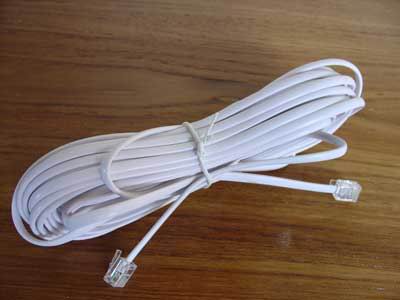ADSL wires electromagnetic emissions

Typical ADSL wires today are another source of electromagnetic fields at middle and high frequency.
Their emissions are very low, compared to that of other computer cables, so they aren't a big problem usually, but they can create a lot of problems if the wire crosses or run parallel to another wire.
For example, if an ADSL wire is located near to the wire of a desktop lamp, the lamp will emit also EMF at middle and high frequencies.
ADSL wires are usually identical to phone wires, they are flat, with two or four parallel conductors, with very thin plastic layer around them, and have the small 6-place connectors (RJ11). The inner wires are not twisted and neither shielded.
The phone circuit doesn't need any voltage on the wire when the phone is not calling. In a typical case the phone is used every now and then, so the EMF of the telephone wire are not a problem, usually.
The ADSL instead is used for much longer than a phone call. In addition to this, the frequencies are higher and the frequency band is much wider.
The EMF of the ADSL wire can also be due in part to the modem's small power supply. As in many other devices, the small power supply creates a lot of electromagnetic noise that goes into the modem circuit board and then also into the ADSL wire.
A possible solution to this problem is to use a shielded ADSL cable, they are already available in commerce, however the ADSL wire should be kept far away from other wires that go to the desk or other working place.